La Vuelta 2022 - Stage 16:- Sanlúcar de Barrameda - Tomares 189.4km ***Spoilers***

blazing_saddles
Posts: 22,730
in Pro race
Stage 16:- Sanlúcar de Barrameda - Tomares 189.4km
Tuesday, September 6, 2022
Start Time 12-45CET.
The final week kicks off with a flat stage and a last chance for the sprinters ahead of a series of hilly stages they'll have to negotiate. The rolling route leading from Sanlúcar de Barrameda to Tomares is 189.4 kilometres long. While stage 16 is among the flattest stages of the entire Vuelta, there are two short climbs inside the last 10 kilometres. The elevation gain of the route through southwestern Spain does not exceed 1,000 metres.

The 189.4km stage starts out in Sanlúcar de Barrameda, part of the famous 'sherry triangle' of south west Spain and home of the Manzanilla variety of crisp dry wine that's drunk cold by the sea. The flat route heads up and around Seville but doesn't delve into Andalucía's biggest city, instead heading for a finish in the more forgettable suburb of Tomares.
Three years ago the Ruta del Sol visited Sanlúcar de Barrameda, a town at the mouth of the Guadalquivir. That race went to an uphill finish in Alcalá de los Gazules, where Tim Wellens climbed to victory on the steep cobbles.

Final Kms.
The finale in Tomares is pepped up with two short climbs inside the last 10 kilometres. The first one is 1.5 kilometres long and rises at 6.1% before, while the second one is a short uphill kicker with almost 3 kilometres to go. The home straight runs false flat uphill.

What to Expect.
A bunch sprint is the most likely outcome. The sprinter teams will be keen to control this one, as opportunities are few and far between. Consequently, I don't expect the breakaway to be too big or stacked with quality as their prospects are not great.
Sanlúcar de Barrameda
Population 69,205
Sanlúcar de Barrameda, or simply Sanlúcar, is a city in the northwest of Cádiz province, part of the autonomous community of Andalucía in southern Spain. Sanlúcar is located on the left bank at the mouth of the Guadalquivir River opposite the Doñana National Park, 52 km from the provincial capital Cádiz and 119 km from Sevilla capital of the autonomous region Andalucía.
On the 6th of September 1522, the sailor Juan Sebastián Elcano returned to Spain after a three-year voyage, landing at Sanlúcar de Barrameda, thus becoming the first person in history to circumnavigate the Earth. Exactly 500 years later, La Vuelta pays homage to the Cádiz locality by hosting an unprecedented stage departure there.
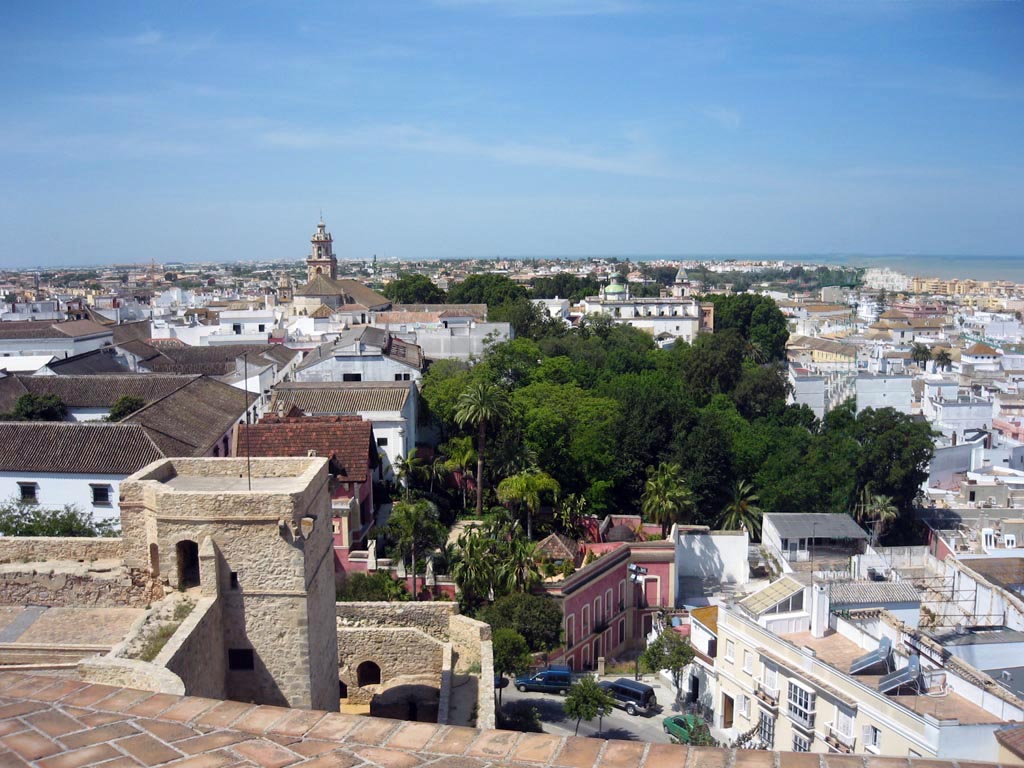
Sanlúcar de Barrameda, which has recently been named the 2022 Capital Española de la Gastronomía (Spanish Capital of Gastronomy). Fried acedías (plaice) and chocos (cuttlefish), arroz con pato (rice with duck) and seafood-fuelled stews and rice dishes such as arroz caldoso count among Sanlúcar’s endless delights.

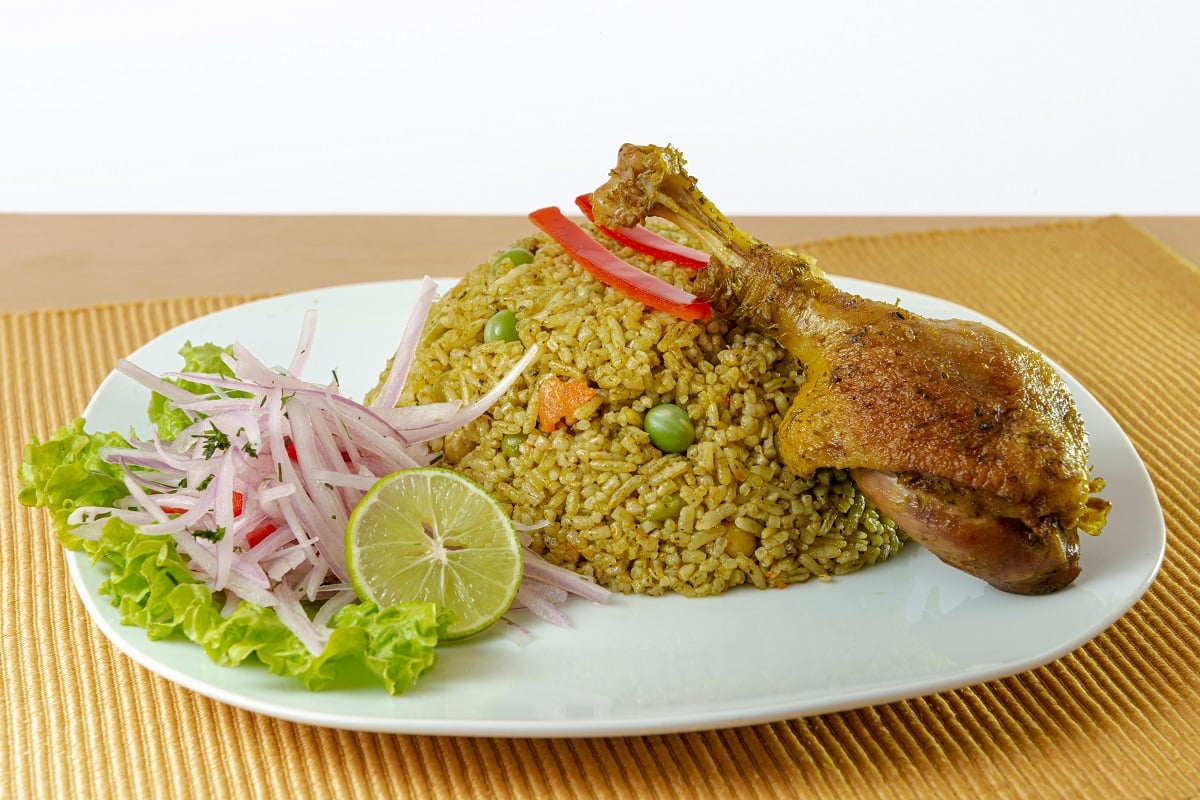
Fino versus Manzanilla: an internal conflict
Winemakers in Sanlúcar are legally allowed to produce both Manzanilla and Fino in the same bodega. They use the name Manzanilla for the classical lighter wines and Fino for those that are a bit more full-bodied. In 1933 the D.O. Jerez-Xérès-Sherry was established, including Manzanilla as one of the allowed typologies. However back then the wine could be aged in the entire sherry region, and different copies could be found around Spain. Over the years a growing appreciation and understanding of the differences between Manzanilla and Fino, as well as a lawsuit between Pedro Domecq and winemakers in the town called Manzanilla (province of Huelva) led to the foundation of a separate D.O. Manzanilla de Sanlúcar in 1964. In 1933 the D.O. Jerez-Xérès-Sherry was established, including Manzanilla as one of the allowed typologies. However back then the wine could be aged in the entire sherry region, and different copies could be found around Spain. Over the years a growing appreciation and understanding of the differences between Manzanilla and Fino, as well as a lawsuit between Pedro Domecq and winemakers in the town called Manzanilla (province of Huelva) led to the foundation of a separate D.O. Manzanilla de Sanlúcar in 1964.
Two names are in use for basically the same wine, with no explicit technical difference and no clear-cut provenance either. The Consejo has been trying to solve this for over ten years and although it has regularly been put on the agenda, an agreement was never found.
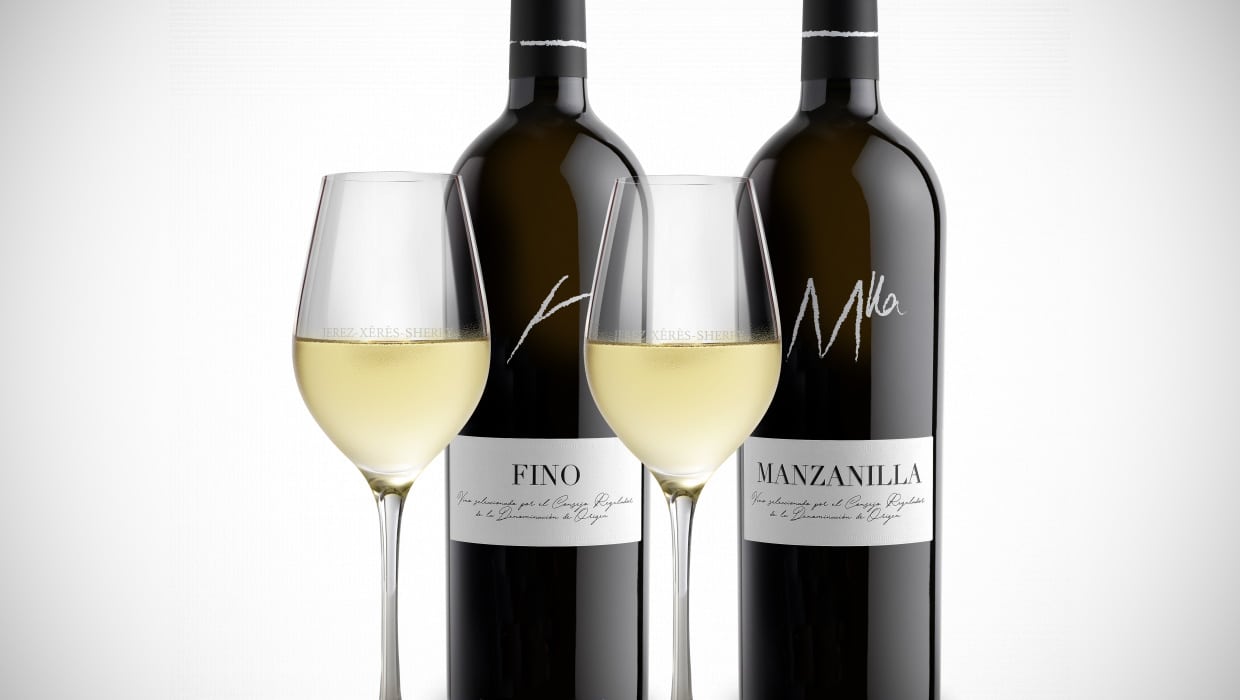
There are two main kinds: sweet olorosos (though no longer officially referred to as that) which are aged without a protective layer of flor (yeast) and which tastes like liquid Christmas pudding and intensely treacley PX which is made from raisined pedro ximenez grapes. And cheaper cream sherries which are sweetened olorosos.
The are excellent accompaniments to rich desserts and blue cheeses.

Tomares
Population 25,455
Tomares is a municipality in Andalusia, southern Spain. It is a Seville suburb of over 25,000 inhabitants situated two kilometers west of Triana District of Seville, separated from the city by River Guadalquivir. Due to its unstoppable demographic and economic growth over the past few decades, Tomares has established itself as the preferred city of residence for thousands of Sevillians. Its numerous green spaces and the municipality’s proximity to the Andalusian capital are two of its main attractions, both of which have won over La Vuelta, following a finish-line in a Tomares locality in 2017. Victory went to Matteo Trentin, one of the stars of that particular edition.
Despite all of the invasions and influences, the cuisine in Andalusia remains in general fresh and simple, with leanings towards a peasant's diet due to historical periods of abject poverty in Spain, particularly devastating during the Spanish Civil War.
Salmorejo
Originating from the southern city of Cordoba, salmorejo is one of Andalusia’s most popular dishes. It’s a cold, velvety tomato soup made with breadcrumbs and olive oil that’s often served with diced jamón Ibérico (Iberian ham) and sliced boiled eggs. Salmorejo is not to be confused with the similar gazpacho.
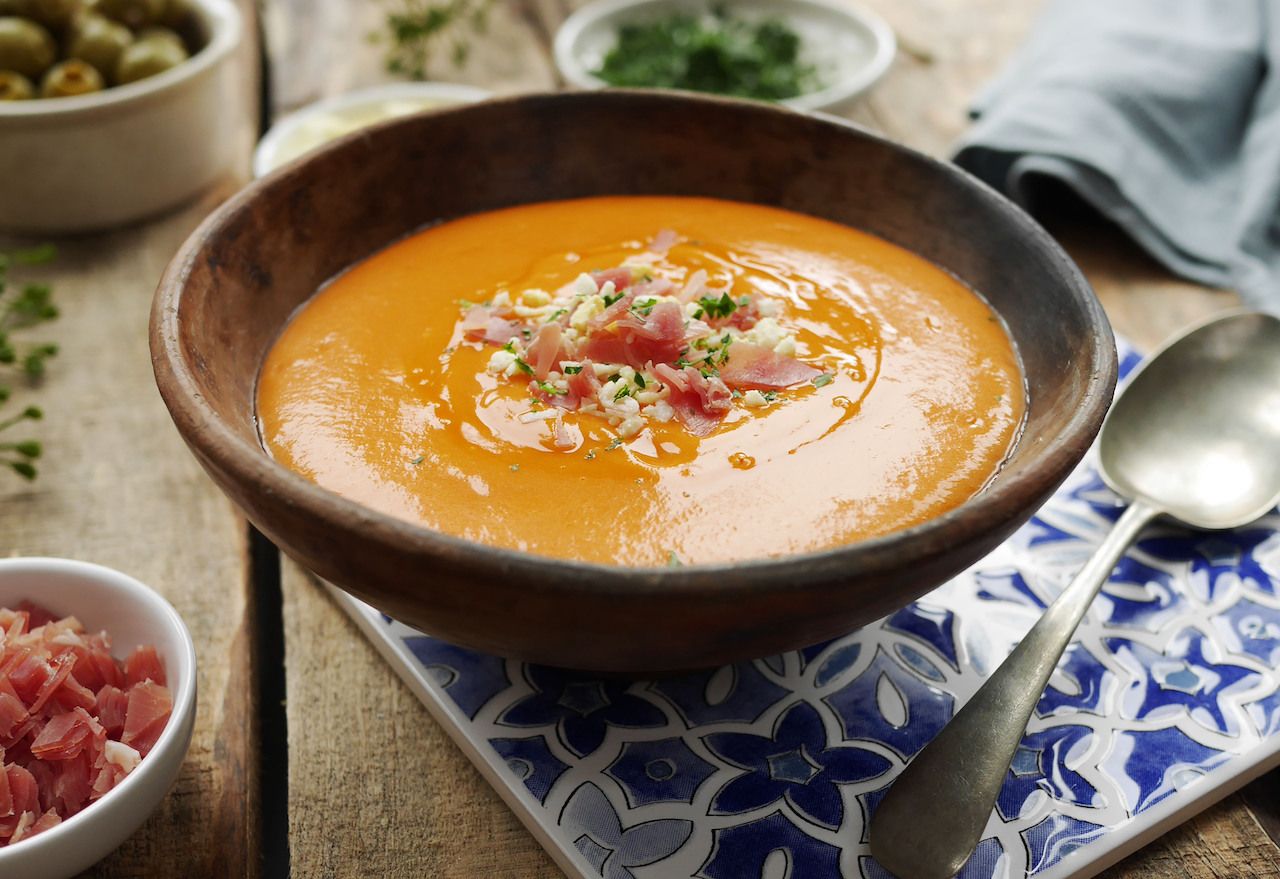
Huevos a la flamenca
This is essentially Andalusia on a plate. Huevos a la flamenca is an egg cassoulet made with tomato sauce, spicy red peppers, onions, garlic, and smoked paprika topped with diced jamón serrano and chorizo sausage. The dish is typically served hot out of the oven in a clay pot and makes for an exceptional brunch or light-lunch meal.
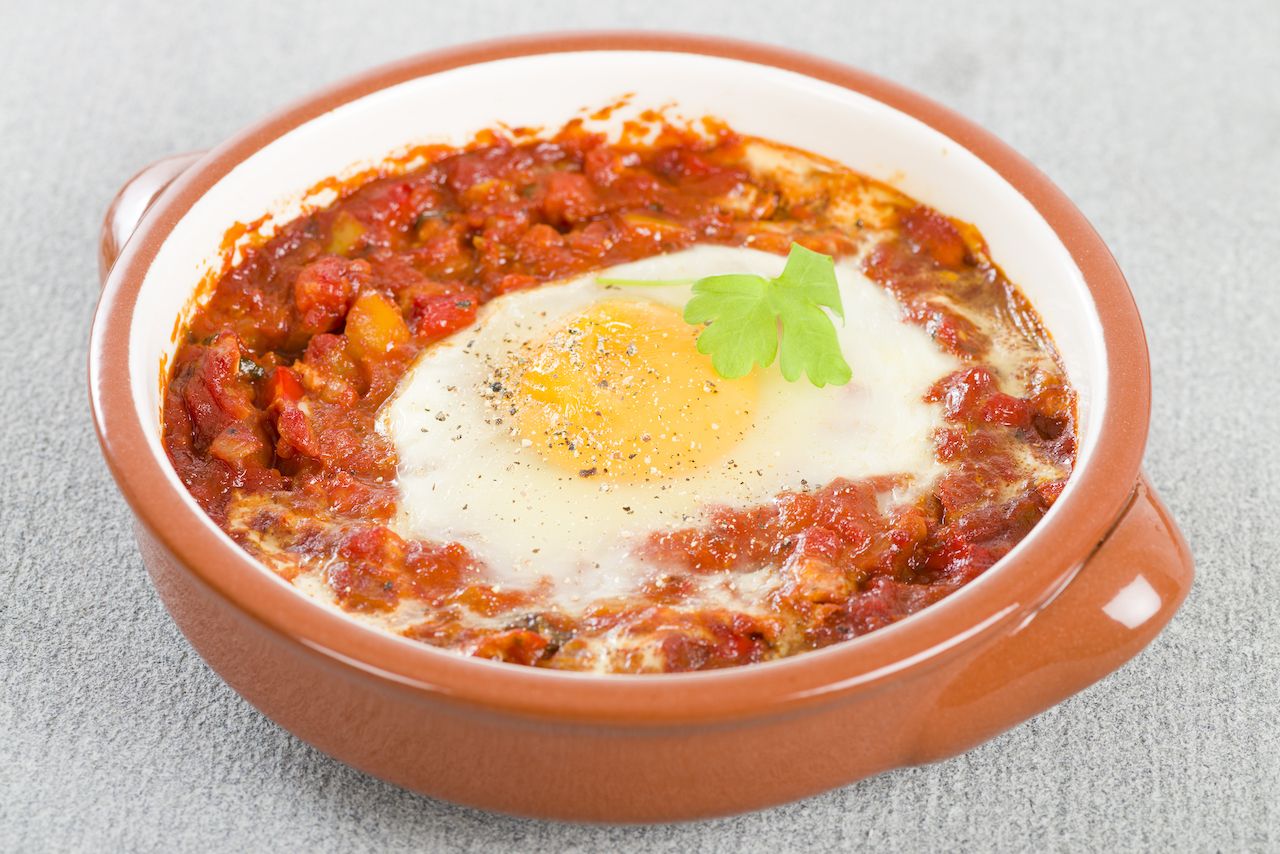
Tuesday, September 6, 2022
Start Time 12-45CET.
The final week kicks off with a flat stage and a last chance for the sprinters ahead of a series of hilly stages they'll have to negotiate. The rolling route leading from Sanlúcar de Barrameda to Tomares is 189.4 kilometres long. While stage 16 is among the flattest stages of the entire Vuelta, there are two short climbs inside the last 10 kilometres. The elevation gain of the route through southwestern Spain does not exceed 1,000 metres.

The 189.4km stage starts out in Sanlúcar de Barrameda, part of the famous 'sherry triangle' of south west Spain and home of the Manzanilla variety of crisp dry wine that's drunk cold by the sea. The flat route heads up and around Seville but doesn't delve into Andalucía's biggest city, instead heading for a finish in the more forgettable suburb of Tomares.
Three years ago the Ruta del Sol visited Sanlúcar de Barrameda, a town at the mouth of the Guadalquivir. That race went to an uphill finish in Alcalá de los Gazules, where Tim Wellens climbed to victory on the steep cobbles.

Final Kms.
The finale in Tomares is pepped up with two short climbs inside the last 10 kilometres. The first one is 1.5 kilometres long and rises at 6.1% before, while the second one is a short uphill kicker with almost 3 kilometres to go. The home straight runs false flat uphill.

What to Expect.
A bunch sprint is the most likely outcome. The sprinter teams will be keen to control this one, as opportunities are few and far between. Consequently, I don't expect the breakaway to be too big or stacked with quality as their prospects are not great.
Sanlúcar de Barrameda
Population 69,205
Sanlúcar de Barrameda, or simply Sanlúcar, is a city in the northwest of Cádiz province, part of the autonomous community of Andalucía in southern Spain. Sanlúcar is located on the left bank at the mouth of the Guadalquivir River opposite the Doñana National Park, 52 km from the provincial capital Cádiz and 119 km from Sevilla capital of the autonomous region Andalucía.
On the 6th of September 1522, the sailor Juan Sebastián Elcano returned to Spain after a three-year voyage, landing at Sanlúcar de Barrameda, thus becoming the first person in history to circumnavigate the Earth. Exactly 500 years later, La Vuelta pays homage to the Cádiz locality by hosting an unprecedented stage departure there.

Sanlúcar de Barrameda, which has recently been named the 2022 Capital Española de la Gastronomía (Spanish Capital of Gastronomy). Fried acedías (plaice) and chocos (cuttlefish), arroz con pato (rice with duck) and seafood-fuelled stews and rice dishes such as arroz caldoso count among Sanlúcar’s endless delights.


Fino versus Manzanilla: an internal conflict
Winemakers in Sanlúcar are legally allowed to produce both Manzanilla and Fino in the same bodega. They use the name Manzanilla for the classical lighter wines and Fino for those that are a bit more full-bodied. In 1933 the D.O. Jerez-Xérès-Sherry was established, including Manzanilla as one of the allowed typologies. However back then the wine could be aged in the entire sherry region, and different copies could be found around Spain. Over the years a growing appreciation and understanding of the differences between Manzanilla and Fino, as well as a lawsuit between Pedro Domecq and winemakers in the town called Manzanilla (province of Huelva) led to the foundation of a separate D.O. Manzanilla de Sanlúcar in 1964. In 1933 the D.O. Jerez-Xérès-Sherry was established, including Manzanilla as one of the allowed typologies. However back then the wine could be aged in the entire sherry region, and different copies could be found around Spain. Over the years a growing appreciation and understanding of the differences between Manzanilla and Fino, as well as a lawsuit between Pedro Domecq and winemakers in the town called Manzanilla (province of Huelva) led to the foundation of a separate D.O. Manzanilla de Sanlúcar in 1964.
Two names are in use for basically the same wine, with no explicit technical difference and no clear-cut provenance either. The Consejo has been trying to solve this for over ten years and although it has regularly been put on the agenda, an agreement was never found.

There are two main kinds: sweet olorosos (though no longer officially referred to as that) which are aged without a protective layer of flor (yeast) and which tastes like liquid Christmas pudding and intensely treacley PX which is made from raisined pedro ximenez grapes. And cheaper cream sherries which are sweetened olorosos.
The are excellent accompaniments to rich desserts and blue cheeses.

Tomares
Population 25,455
Tomares is a municipality in Andalusia, southern Spain. It is a Seville suburb of over 25,000 inhabitants situated two kilometers west of Triana District of Seville, separated from the city by River Guadalquivir. Due to its unstoppable demographic and economic growth over the past few decades, Tomares has established itself as the preferred city of residence for thousands of Sevillians. Its numerous green spaces and the municipality’s proximity to the Andalusian capital are two of its main attractions, both of which have won over La Vuelta, following a finish-line in a Tomares locality in 2017. Victory went to Matteo Trentin, one of the stars of that particular edition.
Despite all of the invasions and influences, the cuisine in Andalusia remains in general fresh and simple, with leanings towards a peasant's diet due to historical periods of abject poverty in Spain, particularly devastating during the Spanish Civil War.
Salmorejo
Originating from the southern city of Cordoba, salmorejo is one of Andalusia’s most popular dishes. It’s a cold, velvety tomato soup made with breadcrumbs and olive oil that’s often served with diced jamón Ibérico (Iberian ham) and sliced boiled eggs. Salmorejo is not to be confused with the similar gazpacho.

Huevos a la flamenca
This is essentially Andalusia on a plate. Huevos a la flamenca is an egg cassoulet made with tomato sauce, spicy red peppers, onions, garlic, and smoked paprika topped with diced jamón serrano and chorizo sausage. The dish is typically served hot out of the oven in a clay pot and makes for an exceptional brunch or light-lunch meal.

"Science is a tool for cheaters". An anonymous French PE teacher.
1
Comments
-
I was going to ask is there any chance of a veggie dish of the day. Then I remembered it’s The Tour of Spain.1
-
Salmorejo without the ham. Wonderful.
0 -
Break from the gun from Okamika and Luis Angel Mate.
Maybe finally some trees might get planted.0 -
Bit surprised Coquard is second favourite - I thought he was packing up and going home on Friday.
0 -
Still 95kms to go cos it’s slow, slow, slow."Science is a tool for cheaters". An anonymous French PE teacher.0
-
Wake me up at 10 kms to go. ZzzzzzzzThe above may be fact, or fiction, I may be serious, I may be jesting.
I am not sure. You have no chance.Veronese68 wrote:PB is the most sensible person on here.0 -
I think it's a 20km day today, so give it an hour and a half.pblakeney said:Wake me up at 10 kms to go. Zzzzzzzz
0 -
16:00 will do. Cheers!The above may be fact, or fiction, I may be serious, I may be jesting.
I am not sure. You have no chance.Veronese68 wrote:PB is the most sensible person on here.0 -
Try 16-20.
Still 48kms to go."Science is a tool for cheaters". An anonymous French PE teacher.0 -
But I'm finished work by then! 🤣blazing_saddles said:Try 16-20.
Still 48kms to go.
Tell them to get a move on.The above may be fact, or fiction, I may be serious, I may be jesting.
I am not sure. You have no chance.Veronese68 wrote:PB is the most sensible person on here.0 -
It's going to be rock and roll according to CK 22K"If I was a 38 year old man, I definitely wouldn't be riding a bright yellow bike with Hello Kitty disc wheels, put it that way. What we're witnessing here is the world's most high profile mid-life crisis" Afx237vi Mon Jul 20, 2009 2:43 pm0
-
When?mididoctors said:It's going to be rock and roll according to CK 22K
Looks more like a line dance atm."Science is a tool for cheaters". An anonymous French PE teacher.0 -
10km was more realistic as it turns out.0
-
Kirby currently engaged in his usual name half the peloton as winners, spiel."Science is a tool for cheaters". An anonymous French PE teacher.0
-
Why is Carlton reading out the names of the whole peloton?0
-
Switched on at 14 kms. Probably should have waited till 4 kms.kingstongraham said:10km was more realistic as it turns out.
The above may be fact, or fiction, I may be serious, I may be jesting.
I am not sure. You have no chance.Veronese68 wrote:PB is the most sensible person on here.0 -
Spot on.kingstongraham said:10km was more realistic as it turns out.
Groves puncture was very exciting."Science is a tool for cheaters". An anonymous French PE teacher.0 -
Roglic"Science is a tool for cheaters". An anonymous French PE teacher.0
-
Evenepoel puncture.
Kirby loses the plot."Science is a tool for cheaters". An anonymous French PE teacher.0 -
Finally they realised it’s the 3km rule."Science is a tool for cheaters". An anonymous French PE teacher.0
-
Fake mechanical?"If I was a 38 year old man, I definitely wouldn't be riding a bright yellow bike with Hello Kitty disc wheels, put it that way. What we're witnessing here is the world's most high profile mid-life crisis" Afx237vi Mon Jul 20, 2009 2:43 pm0
-
Surely they give remco the time of the second group"If I was a 38 year old man, I definitely wouldn't be riding a bright yellow bike with Hello Kitty disc wheels, put it that way. What we're witnessing here is the world's most high profile mid-life crisis" Afx237vi Mon Jul 20, 2009 2:43 pm0
-
Roglic on the deck"Science is a tool for cheaters". An anonymous French PE teacher.0
-
He should get 8 seconds?0
-
Doh!0
-
Drama but roglic should gain at least 8 secs"If I was a 38 year old man, I definitely wouldn't be riding a bright yellow bike with Hello Kitty disc wheels, put it that way. What we're witnessing here is the world's most high profile mid-life crisis" Afx237vi Mon Jul 20, 2009 2:43 pm0
-
Pederson wins, obvs0
-
So net result is they will both get the group time.
Oh and Pedersen won."Science is a tool for cheaters". An anonymous French PE teacher.0 -
Got to give Roglic credit there. Looks quite shaken up, not sure which group gets classed as the peloton.0
-
Roglic touched wheels"If I was a 38 year old man, I definitely wouldn't be riding a bright yellow bike with Hello Kitty disc wheels, put it that way. What we're witnessing here is the world's most high profile mid-life crisis" Afx237vi Mon Jul 20, 2009 2:43 pm0




